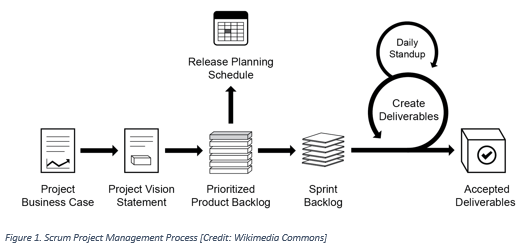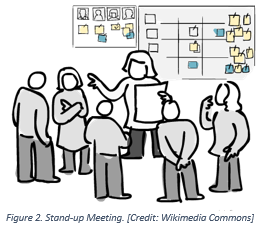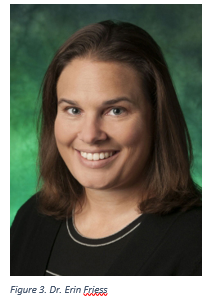By Nischal Kelwadkar
Dr. Erin Friess, Associate Professor in the Technical Communication Department at UNT, recently published a study that analyzed the use of Scrum language in the workplace.
 Scrum is a relatively common project management process in technical and business fields, but it's also a project management process that can cause integration challenges for technical communicators who are on engineering, software development, or business teams that use Scrum. Scrum is a type of agile workflow that requires team members to use particular terminology and frameworks associated with Scrum principles during their project meetings. The goal of Dr. Friess's study was to determine if members of a Scrum team actually used this terminology while in a professional setting and how the results could improve technical writers and communicators' efforts on Scrum teams. She found that some hallmarks of Scrum are routinely used by all team members, but other aspects of Scrum are ignored by all or some of the team members.
Scrum is a relatively common project management process in technical and business fields, but it's also a project management process that can cause integration challenges for technical communicators who are on engineering, software development, or business teams that use Scrum. Scrum is a type of agile workflow that requires team members to use particular terminology and frameworks associated with Scrum principles during their project meetings. The goal of Dr. Friess's study was to determine if members of a Scrum team actually used this terminology while in a professional setting and how the results could improve technical writers and communicators' efforts on Scrum teams. She found that some hallmarks of Scrum are routinely used by all team members, but other aspects of Scrum are ignored by all or some of the team members.
In her article, Dr. Friess questions if the practices of the team members she evaluated can still be considered Scrum. "Deviating from standard Scrum is not new," she says, "but at what point do these deviations from standard Scrum mean that the group is not performing Scrum at all?"
By understanding what aspects of Scrum are the most valued in real-world practice, instructors in UNT's undergraduate and graduate programs can better prepare BA and MA in Professional and Technical Communication students for the challenges of integrating painlessly into a Scrum team upon graduation.
Methods and Results
To evaluate the lan guage being used by members of a Scrum team, Dr. Friess obtained permission from a midsized US-based software-engineering firm that included technical writers on their Scrum teams to record all meetings that did not involve a third-party client. She then transcribed the recordings and developed a codebook based on the standard activities defined in the Scrum framework. Then she identified all of the clauses in her transcriptions and determined which ones contained Scrum-relevant language according to her codebook. Studying these clauses was no small feat: in total, she identified and analyzed more than 24,000 of them. She also divided the transcriptions into subject-specific sections and studied the language of sections that followed Scrum guidelines in order to determine how team members felt about Scrum.
guage being used by members of a Scrum team, Dr. Friess obtained permission from a midsized US-based software-engineering firm that included technical writers on their Scrum teams to record all meetings that did not involve a third-party client. She then transcribed the recordings and developed a codebook based on the standard activities defined in the Scrum framework. Then she identified all of the clauses in her transcriptions and determined which ones contained Scrum-relevant language according to her codebook. Studying these clauses was no small feat: in total, she identified and analyzed more than 24,000 of them. She also divided the transcriptions into subject-specific sections and studied the language of sections that followed Scrum guidelines in order to determine how team members felt about Scrum.
Through her analysis, Friess observed that although teams valued certain aspects of Scrum, other aspects were viewed simply as "hoops that must be jumped through" (p. 140).
Application of Findings
 Based on her findings, Friess noted that while Scrum is a popular, tested, and successful framework, it may not be right for all teams and projects. Other frameworks such as Kanban and Scrumban are also available, so it may be beneficial for companies to carefully consider their teams' project-workflow practices and attitudes in order to help them select the methodology that best suits their needs.
Based on her findings, Friess noted that while Scrum is a popular, tested, and successful framework, it may not be right for all teams and projects. Other frameworks such as Kanban and Scrumban are also available, so it may be beneficial for companies to carefully consider their teams' project-workflow practices and attitudes in order to help them select the methodology that best suits their needs.
If you are interested in reading Dr. Friess's full study, click here. For updates on the department, follow the Technical Communication Department on Facebook and Twitter.

